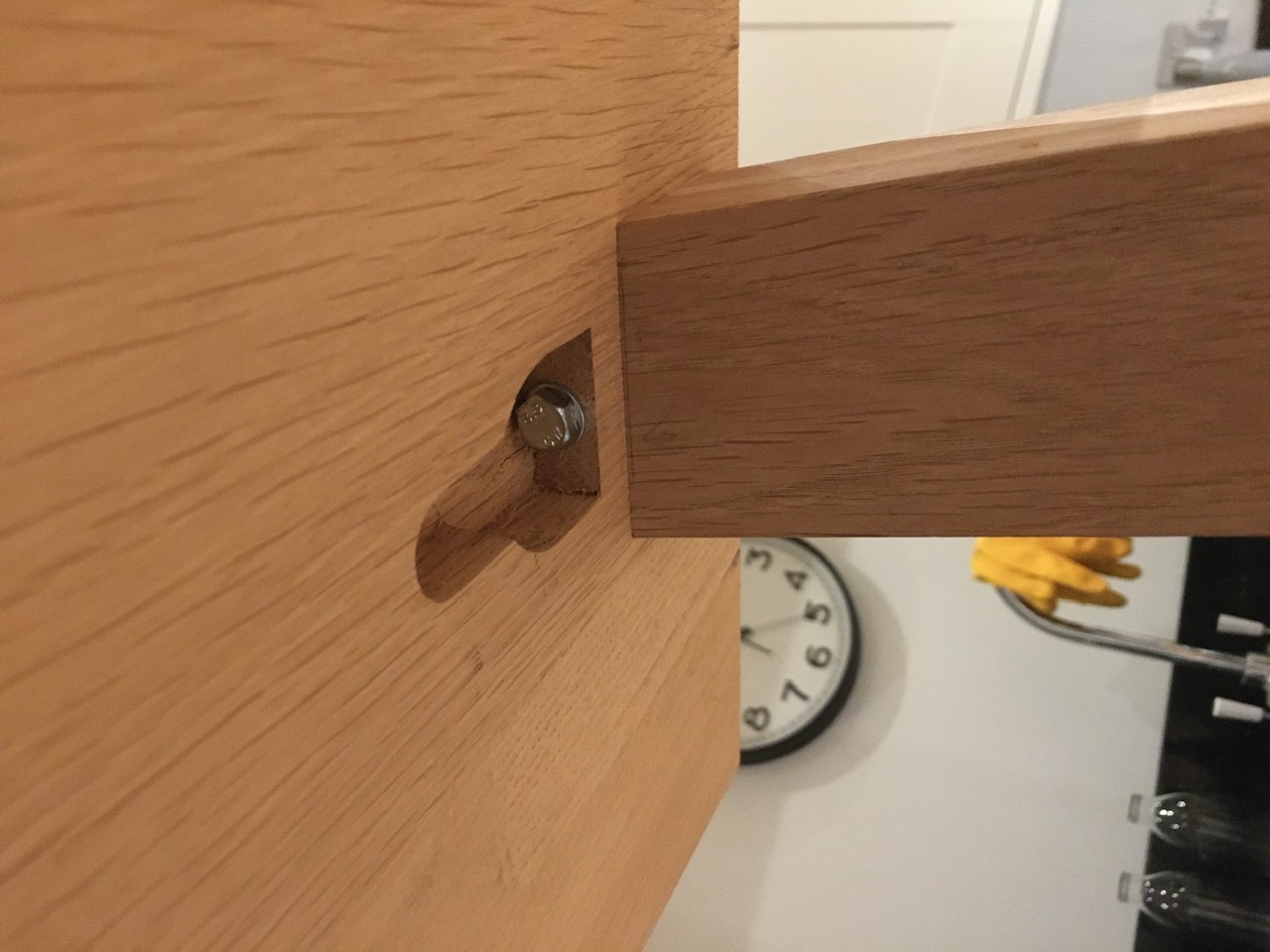Hi all.
I’ve just about finished a set of ladder shelves for my boys room and have a question about allowing for seasonal movement.

The shelves sit in a ‘bridle joint’ however the grain in the shelf is perpendicular to the grain in the ‘leg’. Each shelf is fixed with a bed bolt and insert nut.


The joints are a close fit and I’m concerned that dissimilar seasonal movement between the shelf and leg will creat enough force to split the shelves at the joint.
The wood expansion calculator predicts a max movement of c. 0.9mm across the width of the joint. I could allow for this is the joint by creating a gap on either side, one of my joints had this due to some poor marking out, oops.

I’m in two minds as, firstly it’s a tiny amount, and secondly the leg will move to some degree. It would be easy to incorporate but I’d rather have a nice neat joint than one I have to explain is gappy for a reason, although no one bar me will ever notice!
Opinions on to allow for the movement or not would be great.
All other comments and criticisms welcomed.
Fitz.
PS. Already decided the rear leg on the bottom shelf is fugly and will be replaced with a centre leg you can’t see. The unit is affixed to the wall so the leg is only to stop the shelf sagging.
PPS. Stupid iPhone can now size images during upload, yey, but messes with the orientation, darn. Sorry too tired to correct now.
I’ve just about finished a set of ladder shelves for my boys room and have a question about allowing for seasonal movement.

The shelves sit in a ‘bridle joint’ however the grain in the shelf is perpendicular to the grain in the ‘leg’. Each shelf is fixed with a bed bolt and insert nut.


The joints are a close fit and I’m concerned that dissimilar seasonal movement between the shelf and leg will creat enough force to split the shelves at the joint.
The wood expansion calculator predicts a max movement of c. 0.9mm across the width of the joint. I could allow for this is the joint by creating a gap on either side, one of my joints had this due to some poor marking out, oops.

I’m in two minds as, firstly it’s a tiny amount, and secondly the leg will move to some degree. It would be easy to incorporate but I’d rather have a nice neat joint than one I have to explain is gappy for a reason, although no one bar me will ever notice!
Opinions on to allow for the movement or not would be great.
All other comments and criticisms welcomed.
Fitz.
PS. Already decided the rear leg on the bottom shelf is fugly and will be replaced with a centre leg you can’t see. The unit is affixed to the wall so the leg is only to stop the shelf sagging.
PPS. Stupid iPhone can now size images during upload, yey, but messes with the orientation, darn. Sorry too tired to correct now.




































